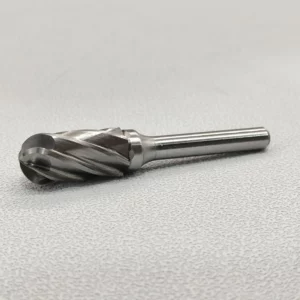Table of Contents
Togglecarbide burr for aluminum
To begin with, it’s crucial to understand the different types of carbide burrs available in the market. When selecting a carbide burr for aluminum, there are three key factors to consider: the shape of the burr, the tooth configuration, and the speed of the tool.
First and foremost, let’s talk about the shape of the burr. The most commonly used shapes for working with aluminum are cylindrical and ball-shaped burrs. Cylindrical burrs are ideal for contouring and blending edges, while ball-shaped burrs work well for rounding off edges and creating concave shapes. Depending on the specific task you need to accomplish, choosing the right shape will greatly enhance your efficiency and precision.
In addition to the shape, the tooth configuration of the carbide burr is also crucial. There are three main types: single-cut, double-cut, and aluminum-specific burrs. Single-cut burrs have a single set of teeth that produce a smooth finish and are suitable for softer materials like aluminum. Double-cut burrs, on the other hand, have two sets of teeth that remove material faster and leave a slightly rougher surface. Lastly, aluminum-specific burrs are specifically designed to excel in shaping and cutting aluminum, providing excellent performance and extended tool life. Consider your desired finish and material hardness before deciding on the tooth configuration.
The speed of the tool is another important factor to consider. Carbide burrs for aluminum are usually designed to operate at a higher speed than those for other materials. This is because aluminum is a softer metal and requires a faster cutting action. Be sure to check the recommended speed range for your chosen carbide burr to ensure it is compatible with your tools and will deliver optimal results.
Now that you have a better understanding of the factors to consider when choosing a carbide burr for aluminum, let’s explore some application areas where this tool truly shines.
One of the key benefits of using a carbide burr for aluminum is its ability to remove material quickly and efficiently. Whether you need to deburr a sharp edge, create a groove, or shape a complex design, a carbide burr can accomplish these tasks with precision and ease. For example, if you are working on an automotive project and need to shape a fender flare or remove excess material from a panel, a carbide burr will be your best friend. Its sharp teeth and high cutting speed will allow you to achieve the desired shape quickly, saving you time and effort.
Furthermore, a carbide burr for aluminum is also excellent for creating clean and precise holes. Whether you need to drill holes for rivets or create openings for electrical components, a carbide burr will ensure smooth edges and accurate dimensions. Its sharp cutting edges make drilling through aluminum effortless and prevent the formation of burrs that can compromise the quality of your work.
Another area where a carbide burr truly excels is in the field of artistic metalwork. If you are a metal sculptor or jewelry maker, you will appreciate the precision and versatility offered by a carbide burr for aluminum. Whether you are engraving intricate patterns or adding texture to your creations, this tool can help you achieve your artistic vision with ease. The ability to control the tool’s speed and vary the pressure allows for endless creative possibilities.
In conclusion, choosing and using a carbide burr for aluminum is a critical process that can greatly impact the quality and efficiency of your projects. By considering factors such as the shape, tooth configuration, and speed of the tool, you can make an informed decision that suits your specific needs. The versatility and precision of a carbide burr make it indispensable in various applications, from automotive projects to artistic metalwork. So, the next time you find yourself working with aluminum, don’t forget to equip yourself with a reliable carbide burr that will make your job easier and yield outstanding results.

